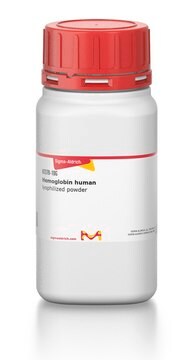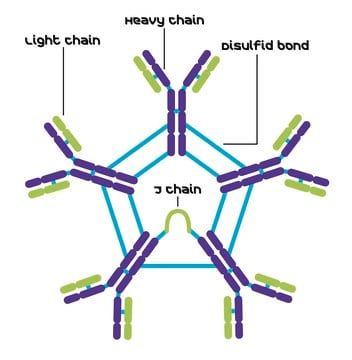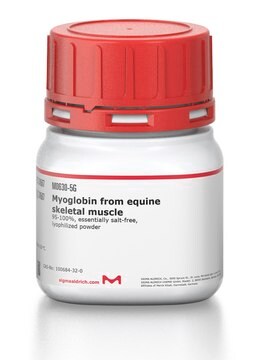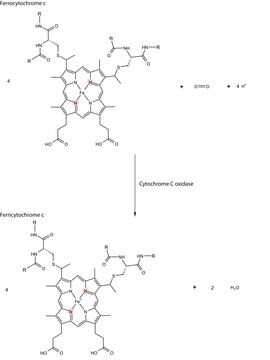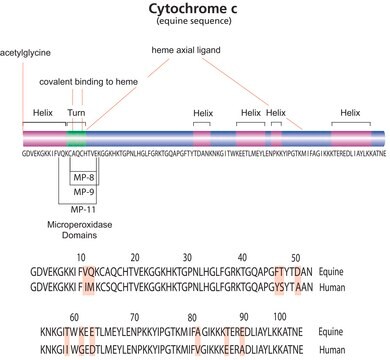C3483
Cytochrome c from human heart
≥95% (SDS-PAGE), lyophilized powder
About This Item
Produits recommandés
Source biologique
human heart
Niveau de qualité
Pureté
≥95% (SDS-PAGE)
Forme
lyophilized powder
Poids mol.
11 kDa by SDS-PAGE
Technique(s)
cell culture | mammalian: suitable
mass spectrometry (MS): suitable
western blot (chemiluminescent): suitable
Numéro d'accès UniProt
Température de stockage
−20°C
Informations sur le gène
human ... CYCS(54205) , CYCSL1(157317)
Description générale
Application
Actions biochimiques/physiologiques
In addition to its function in electron transport, cytochrome c acts as an apoptosis-triggering agent, forming the apoptosome with apoptosis protease-activating factor-1 (Apaf-1) and activating the caspase cascade. The two functions are finely tuned by phosphorylation of Tyr residues at position 48 and/or 97. One recent report provides suggestive evidence that phosphorylation at Tyr48 switches off the apoptotic effect.
Forme physique
Notes préparatoires
Autres remarques
Code de la classe de stockage
13 - Non Combustible Solids
Classe de danger pour l'eau (WGK)
WGK 3
Point d'éclair (°F)
Not applicable
Point d'éclair (°C)
Not applicable
Certificats d'analyse (COA)
Recherchez un Certificats d'analyse (COA) en saisissant le numéro de lot du produit. Les numéros de lot figurent sur l'étiquette du produit après les mots "Lot" ou "Batch".
Déjà en possession de ce produit ?
Retrouvez la documentation relative aux produits que vous avez récemment achetés dans la Bibliothèque de documents.
Les clients ont également consulté
Articles
Learn about the four membrane-bound protein complexes that make up the electron transport chain metabolic pathway supplying energy as ATP for cellular respiration.
Chromatograms
application for HPLCapplication for HPLCapplication for HPLCNotre équipe de scientifiques dispose d'une expérience dans tous les secteurs de la recherche, notamment en sciences de la vie, science des matériaux, synthèse chimique, chromatographie, analyse et dans de nombreux autres domaines..
Contacter notre Service technique


